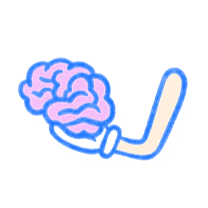*This post has been updated to reflect the ASWB Examination Guidebook, published in December 2022.
The Association of Social Work Boards (ASWB) Advanced Generalist exam is designed to test those with a Masters in Social Work (MSW) over a vast array of topics pertaining to their discipline. It is one of the several steps those who hold MSW’s must take in order to obtain official state licensing and be able to practice or work many of the social work jobs that are in existence.
Many people who are facing the ASWB Advanced Generalist exam want to know what the exam will be testing. While it is easy to find information on the five overarching content categories that the test will question them on, it is not as easy to find more specific details about what each of these content categories will contain. This guide is aimed at helping you narrow down what is fair game for the exam and what isn’t so that studying doesn’t have to be so hard!
Content Area I: Human Development, Diversity & Behavior in the Environment (23%)
This area has four main subsections that questions will be based on, and they are:
- IA. Human Growth and Development
- IB. Functioning of Various Systems
- IC. Effects of the Environment on Systems’ Behavior
- ID. Diversity, Discrimination, and Stereotypes
For this portion of the exam, it is good to be both familiar and comfortable with feminist theory, addiction theories, conflict theories, the family life cycle, different models of human/group development, the socialization process, the impact of social and economic status on individuals, and the effects of discrimination based on culture or economic background.
This portion of the test will account for 23% of your total test score.
Content Area II: Intervention Processes and Techniques for Use Across Systems (32%)
This section of the test has three different subsections that questions will be based on, and they are:
- IIA. Biopsychosocial History and Collateral Data
- IIB. Assessment Methods and Techniques
- IIC. Intervention Planning and Implementation
For this portion of the exam, it is good to be both familiar with psychological and educational tests and measurement, various methods used to assess client’s communication, motivation, or level of care required, components of biopsychosocial history, components of an individual’s history, the effects of stressors on individuals and families, the effects of life crisis on the individual and family, methods used to create behavioral objectives, how to assess clients’ strengths and challenges, effects of body image, and psychotropic/non-psychotropic prescriptions and their side-effects on the client, problem-solving models, behavioral approaches, small group theories, techniques to motivate clients, use of goal-setting, couples intervention and treatment approaches, the process of co-therapy, the concept of empathy/helping relationships, applying evidence-based practices to programs, and verbal/nonverbal communication techniques.
This portion of the test will account for 32% of your total test score.
Content Area III: Intervention Processes and Techniques for Use With Larger Systems (18%)
This portion of the test has four different subsections that questions will be based on, and they are:
- IIIA. Program Development and Research
- IIIB. Methods for Social Change
- IIIC. Supervision and Administration
- IIID. Record-Keeping and Reporting
For this portion of the exam, it is good to be familiar with types of service delivery programs/systems, use of networking, legislative advocacy, social planning methods, time management approaches, governance structures, models of group supervision/peer supervision, methods of managing critical incidents including debriefing for clients and staff, the policy implications of risk management, methods used to plan and assign work for staff, and policy implications of research findings.
This portion of the test will account for 18% of your total test score.
Content Area IV: Professional Relationships, Values, and Ethics (27%)
The final section of this test contains three different subsections that questions will be based on, and they are:
- IVA. Professional Values and Ethical Issues
- IVB. Confidentiality
- IVC. Professional Development and Use of Self
For this portion of the exam, it is good to be familiar with medical, ethical, and legal issues, professional boundary issues, the process of obtaining informed consent, limits of self-determination, legal and ethical issues regarding confidentiality, including electronic information and the social worker’s various ethical responsibilities.
This portion of the test will account for 27% of your total test score.

